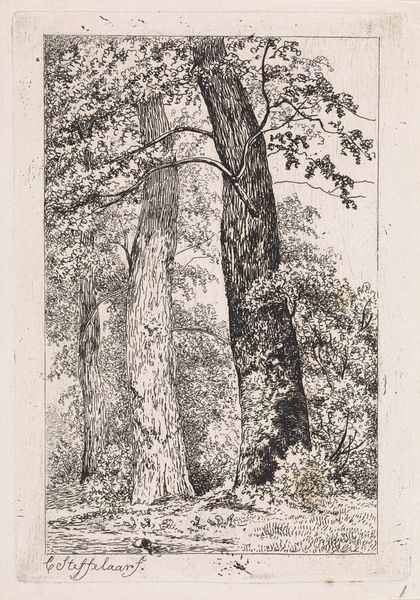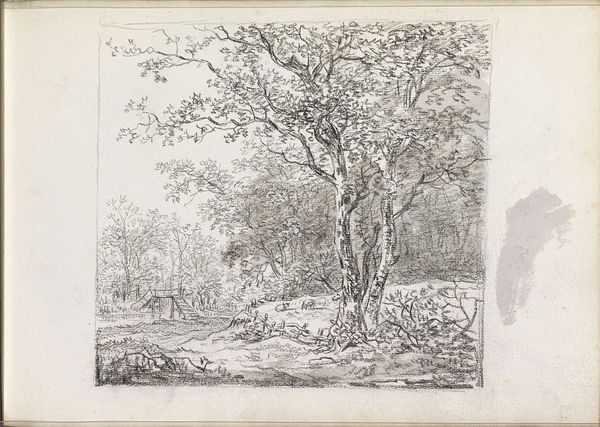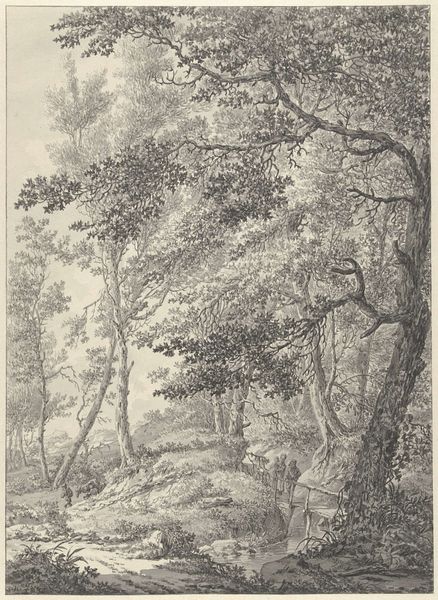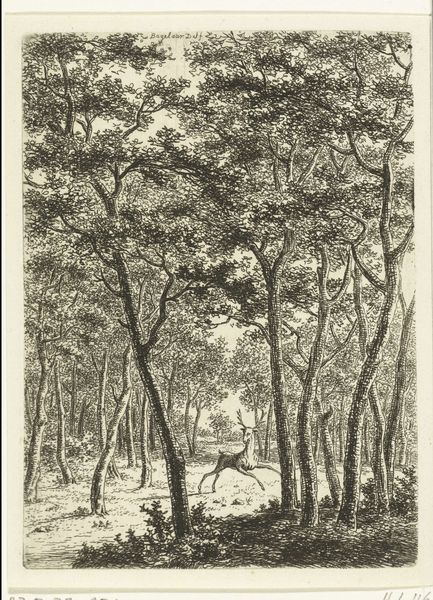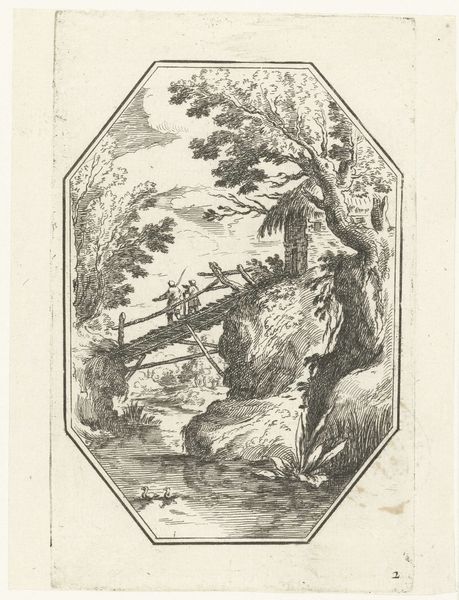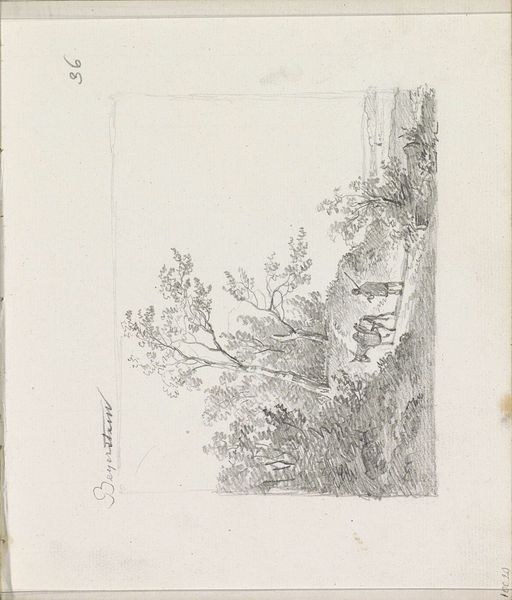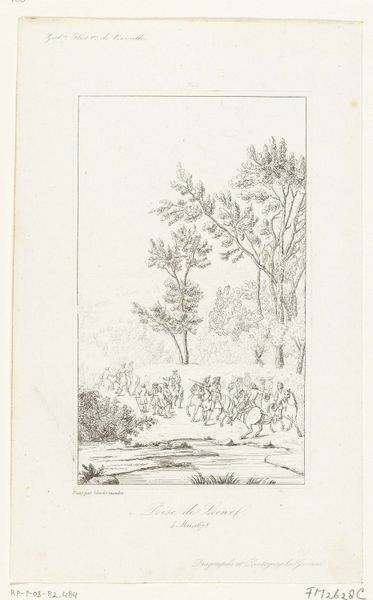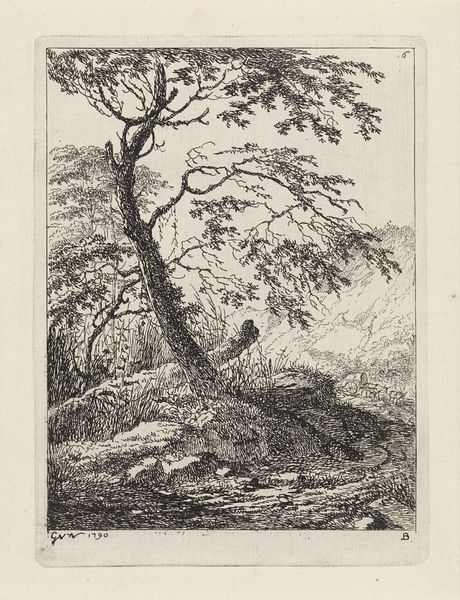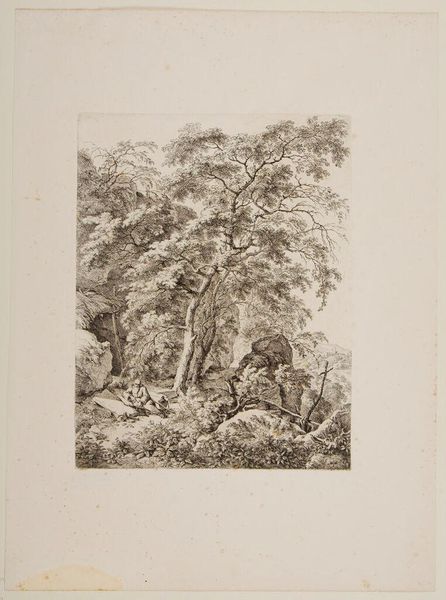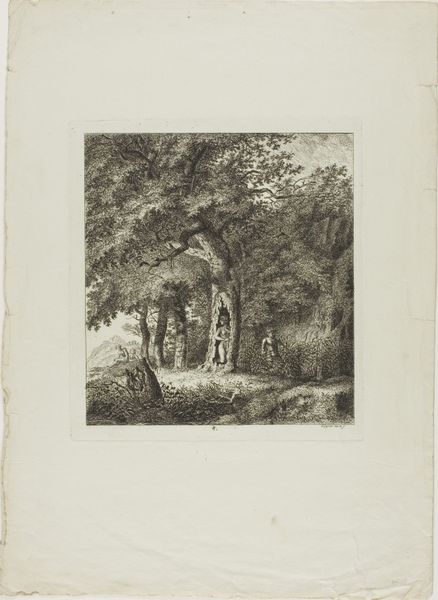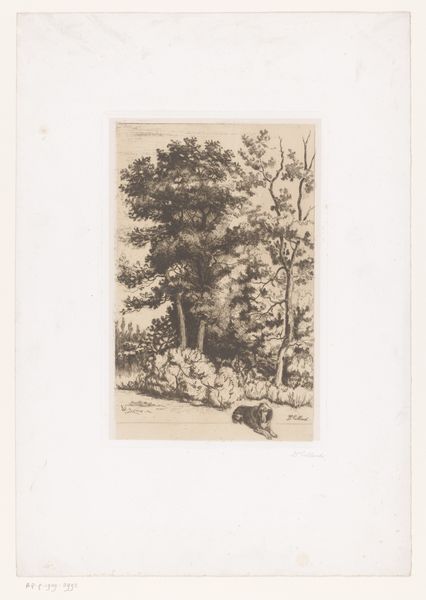
drawing, print, etching, ink, pencil
#
drawing
# print
#
pen sketch
#
etching
#
pencil sketch
#
landscape
#
etching
#
figuration
#
ink
#
pencil
#
genre-painting
#
realism
Dimensions: height 148 mm, width 117 mm
Copyright: Rijks Museum: Open Domain
Editor: Here we have "Letter N in a landscape with two men and a wheelbarrow" by Emil Ost, created sometime between 1856 and 1926 using etching, pencil, ink and other print media. The scene has a certain quietude to it; how do you see this piece? Curator: This quietude you observe emerges directly from the conditions of its making. The etching process, the subtle gradations achieved through the layering of ink, speak to a specific moment in the industrialization of art production. Consider the labor involved in creating the printing plate, the repetitive action of pulling prints. Editor: So you're saying the medium informs our interpretation of the scene itself? Curator: Precisely. These men with the wheelbarrow, are they simply figures in a landscape, or are they stand-ins for the working class whose labor underpinned the very production of images like this? And consider the intended audience—were these prints meant for mass consumption or a more exclusive clientele? The scale, the use of the letter "N," it hints toward its design origin. What kind of book could this have been, and for what purpose? Editor: That makes me reconsider the 'realism' of it. The printmaking itself involved labour that reflects the labour depicted, creating a deeper connection between artist, subject, and the means of production. I never thought about it that way! Curator: Indeed. It’s about looking at the nuts and bolts, literally the materiality of art-making, to understand its broader social and economic implications. The "Letter N" also directs how people interact and even read, since literacy defines a consumer base for art. Editor: It definitely changes how I appreciate prints and drawings. I'll pay closer attention to their material existence and how they relate to their context. Curator: And I think I will begin thinking more deeply about print design, especially in regard to how basic forms such as letters, mediate larger aesthetic considerations.
Comments
No comments
Be the first to comment and join the conversation on the ultimate creative platform.

